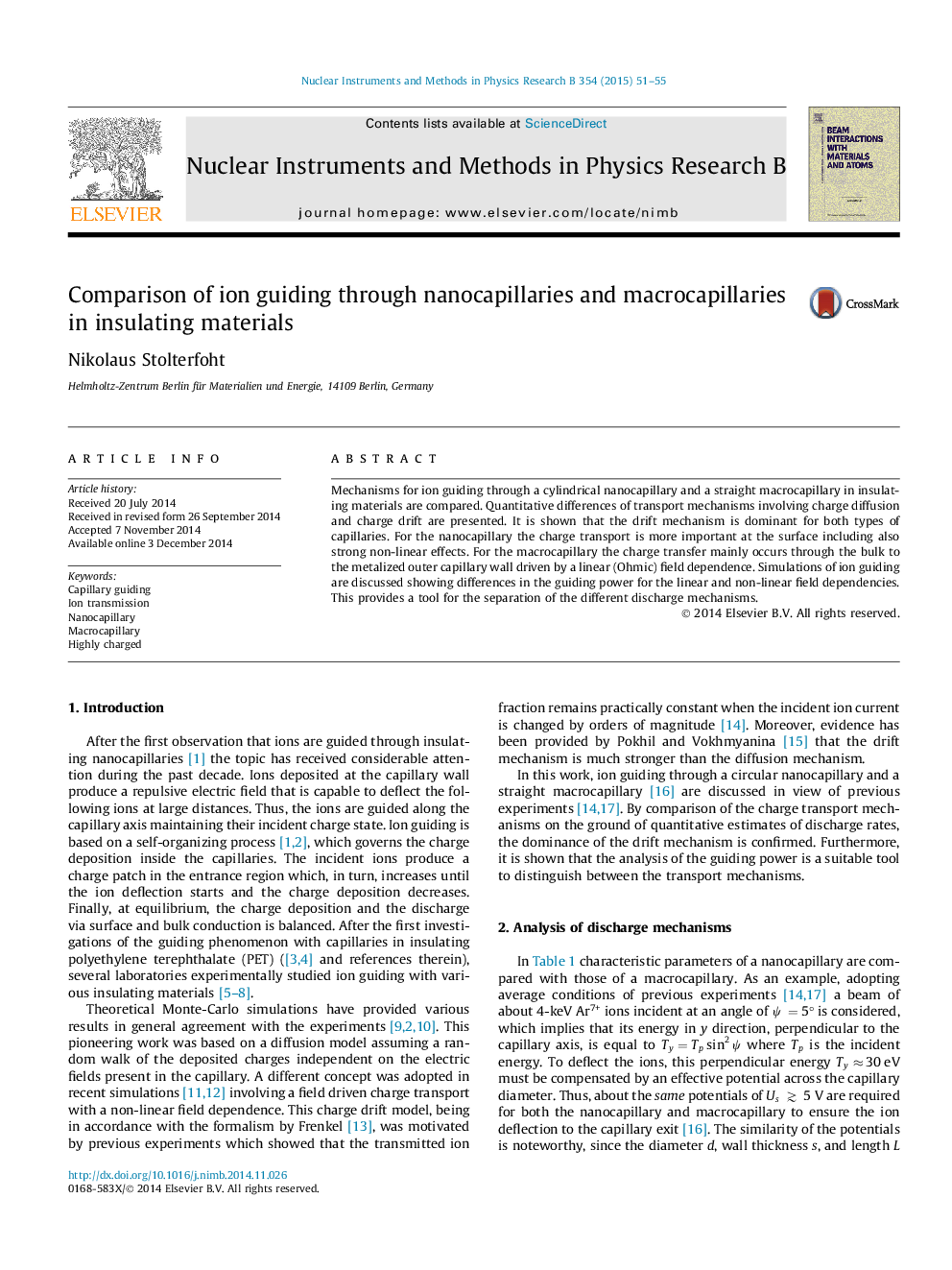| Article ID | Journal | Published Year | Pages | File Type |
|---|---|---|---|---|
| 8040787 | Nuclear Instruments and Methods in Physics Research Section B: Beam Interactions with Materials and Atoms | 2015 | 5 Pages |
Abstract
Mechanisms for ion guiding through a cylindrical nanocapillary and a straight macrocapillary in insulating materials are compared. Quantitative differences of transport mechanisms involving charge diffusion and charge drift are presented. It is shown that the drift mechanism is dominant for both types of capillaries. For the nanocapillary the charge transport is more important at the surface including also strong non-linear effects. For the macrocapillary the charge transfer mainly occurs through the bulk to the metalized outer capillary wall driven by a linear (Ohmic) field dependence. Simulations of ion guiding are discussed showing differences in the guiding power for the linear and non-linear field dependencies. This provides a tool for the separation of the different discharge mechanisms.
Related Topics
Physical Sciences and Engineering
Materials Science
Surfaces, Coatings and Films
Authors
Nikolaus Stolterfoht,
